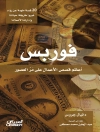This book examines the macroeconomic and regulatory impact of domestic and international shocks on the South African economy resulting from the 2009 financial crisis. It also assesses the impact of the US economy’s eventual recovery from the crisis and the prospect of higher US interest rates in future.
Table of Content
Chapter 1 Introduction.- Chapter 2. Heightened foreign policy uncertainty shocks on the South African economy: Selected channels of transmission.- Chapter 3. UK policy uncertainty shock and South African economy: Inferences from the exchange rate, exports and inflation channels.- Chapter 4. Foreign GDP growth uncertainties shock and South African economy.- Chapter 5. The transmission of foreign economic policy uncertainties: Evidence form exports, equity prices and policy rate channels.- Chapter 6. The real exchange rate fluctuations and macroeconomic dynamics.- Chapter 7. The real exchange rate, foreign demand and domestic policy uncertainty shock effects on economic sectors.- Chapter 8. The transmission channels of the real exchange rate and foreign demand shocks on inflation dynamics.- Chapter 9. Is macroeconomic uncertainty a source of subdued and volatile economic recovery.- Chapter 10. The transmission of domestic macroeconomic uncertainty: Evidence from the confidence and financial channels.- Chapter 11. Financial regulation policy uncertainty, lending rate margins and credit growth.- Chapter 12. The macroeconomic effects of the expected US monetary policy normalisation shock on the South African economy.- Chapter 13. Monetary policy and exchange rate volatility: SA-US interest rate differentials.- Chapter 14. Capital flow episodes and real economic costs of flow.- Chapter 15. Transitory and permanent components of the exchange rate volatility.- Chapter 16. Does the rand per US dollar exchange rate volatility impact on net asset purchases by non-residents?.- Chapter 17. The transmission of exchange rate volatility and policy uncertainty: What role does business, consumer confidence and economic growth play?.- Chapter 18. Asymmetrical real exchange rate risk and exports.- Chapter 19. Do South African exporters engage in pricing-to-market?.
About the author
Eliphas Ndou is an economist at the South African Reserve Bank, and a lecturer at the University of the Witwatersrand, Johannesburg, South Africa. His research interests include international finance and macroeconomics, applied macro and microeconomics, monetary policy, fiscal policy, banking regulation and macro prudential policy.
Nombulelo Gumata holds a Masters Degree in Economics from the University of Johannesburg. She is an economist at the South African Reserve Bank. She also lectures and tutors on a part time basis at the Centre for Education in Economics and Finance Africa (CEEF Africa).
Prof. Mthuli Ncube is Managing Director of Quantum Global Research Lab, Switzerland, and Professor at the University of Oxford, and HSBC Distinguished Professor of Banking and Finance at University of the Witwatersrand(Wits), Wits Business School. Prof. Ncube served as Chief Economist and Vice President of the African Development Bank Group. He has been an Investment Banker. He holds a Ph D in Economics (Mathematical Finance) from University of Cambridge. He is Chairman of the African Economic Research Consortium (AERC) Board and Board member of Global Development Network (GDN) and Royal Africa Society (RAS). He has been Lecturer in Finance at London School of Economics (LSE) and Dean of Wits Business School, and Dean of Wits Faculty of Commerce Law and Management. He has also authored 13 books and numerous research papers in economics and finance.












